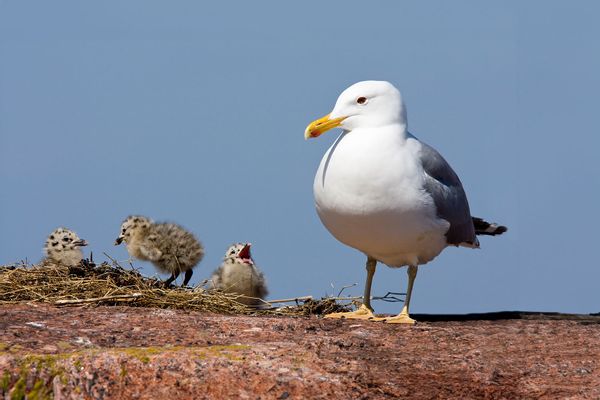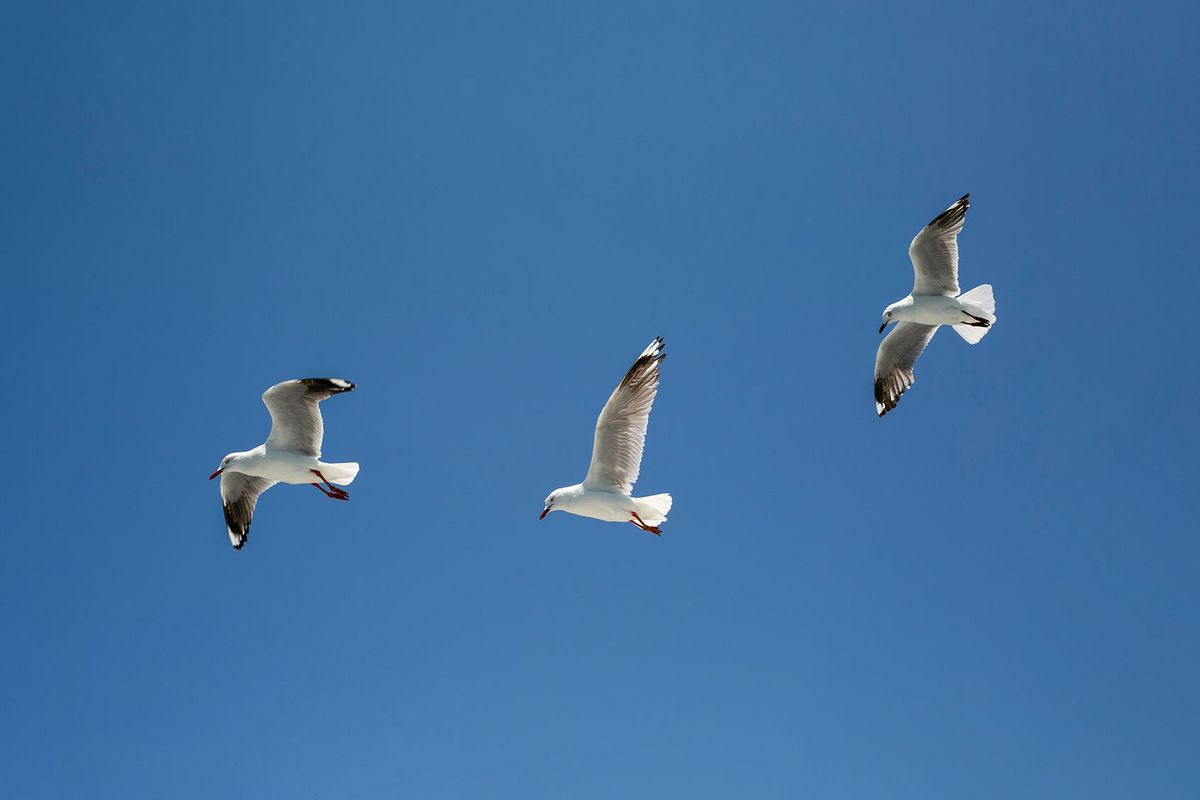Gulls are everywhere, but most people see them as pests, taking for granted their remarkable variety and beauty. Many people think of gulls ("seagull" is not a technical term) as nothing more than obnoxiously screeching birds, swooping for food while leaving white fecal messes behind. Instead of being adored, gulls tend to be more of a punchline. If one agrees with the Canadian novelist Douglas Coupland that "eagles are seagulls with a good hairdo,” then gulls are eagles in desperate need of a quality PR machine.
“The Gull Guide: North America” is a book for people who agree that gulls deserve better than their unflattering reputation. Written and partially photographed by Amar Ayyash — host of the website anythinglarus.com and organizer of America’s largest gull-watching event, the annual Lake Michigan Gull Frolic — “The Gull Guide” is full of vivid and detailed photographs of the gulls themselves.
Just as importantly, it is organized in an easily digestible format for newcomers: First we are taught how to identify different types of gulls, and then the different gull species types are divided into small tern-life and hooded gulls, Larus gulls, Herring gulls and various hybrids.
Salon spoke with Ayyash about his book, which was released on Oct. 29th.
This interview has been lightly edited for clarity and length.
First, what made you take an interest in gulls?
Just their accessibility, their boldness, their identification challenges. I find it intriguing and I thought, you know, this could be something I could busy myself with.
 Herring Gull Larus argentatus with three chicks (Getty Images/aseppa)Now in this book, I will be honest, I find that many of these gull species look interchangeable. I don't want to sound like I'm prejudging these birds, but they're not like peacocks where it is easy to tell them apart on sight. How do you do it?
Herring Gull Larus argentatus with three chicks (Getty Images/aseppa)Now in this book, I will be honest, I find that many of these gull species look interchangeable. I don't want to sound like I'm prejudging these birds, but they're not like peacocks where it is easy to tell them apart on sight. How do you do it?
Just exposing myself to the variation, knowing the different age groups helps, knowing that some are two-age groups, some have three-age groups, and some have four-age groups. I’ve had a lot of practice.
The popular conception of gulls is not the most flattering. In the movie “Finding Nemo,” gulls are depicted constantly saying “Mine!” and being described as “rats with wings.” What do you think of this popular conception of the bird?
"We have gulls that feed on anything you put in front of them. Short of poison, they'll thrive."
I think it's funny! Gulls are kind of an interesting group because some of them are among the most coveted bird species on a bird list. Others are at your ordinary parking lot, or are at a dock begging. I'm aware of the interesting labels that they get. But “rats with wings” is an interesting one. I haven't heard that one actually.
Rats are very intelligent and resourceful. Would you say that describes gulls?
Absolutely! I think there's something about gulls — and just creatures in general that are able to eat what we eat — where we find that kind of threatening, for an organism to be able to survive in our habitat and eat everything that we need. So resourcefulness, that definitely is one of [the traits of intelligence].
When I think of gulls and the fact that they're able to thrive in human habitats, how do you think they're able to do that when so many other species — especially bird species — are floundering because of human activity?
It's a hundred percent related to diet. They're generalists, they're omnivores, and so you can put a gull pretty much anywhere. We have gulls that feed on crabapple trees. We have gulls that feed on flies. We have gulls that feed on trash. We have gulls that feed on fish. We have gulls that feed on anything you put in front of them. Short of poison, they'll thrive.
Want more health and science stories in your inbox? Subscribe to Salon's weekly newsletter Lab Notes.
Do you think it is their digestive systems? Is it their scavenging habits, their social behavior? What is it that makes them so resilient?
Probably everything you just mentioned there. Their ability to scavenge, their ability to feed, the flocks that alert one another to food sources. Their agility. Their ability to live in different habitats, whether it be the sea or a beachfront or parking lot or a rooftop. It's difficult to think of places where gulls can't survive.
Now I, as a child, whenever I would go to the beach, I used to love walking up to gulls and seeing how close I could get to touch them before they would fly away. Do you have advice for other children who are fascinated by gulls and want to learn about them?
The beach is a great place to do it. I think that's where most people see their first gulls. Just step back and take some time to observe them and see their social interactions, and how they're feeding and how they're behaving. I can't imagine a world where there were no gulls at the beach, where there were no gulls on the docks in the marina. Just step back and take some time to watch them and enjoy their behaviors, and I think you'll find them fascinating.
We need your help to stay independent
Do you plan on doing more writing about gulls or is this book the peak of your interests?
At some point there's going to be an advanced skull ID guide for the diehards that take it to the next level. I'm currently working on some identification papers that are going to be published in different journals. So the writing continues, the research continues, the passion continues. I hope.
There is a lot to be learned still with gulls and anybody who is thinking about getting into gulls. There is so much that your average citizen scientist can contribute to our knowledge of gulls. Just by observing them and noting what you're observing, you don't have to be a professional ornithologist or biologist. They're accessible. Everybody can just get out there and watch them and try to appreciate the variation of their plumage.
Have you witnessed any climate change-related impacts on gulls?
There are gulls migrating earlier or later than usual, probably by three to four weeks at this point. Some species are moving late or too early. There are species that are nesting farther and farther south that were once thought of residing around the Arctic Circle that are now starting to breed farther and farther south, mainly due to ice melting in the north.



Shares